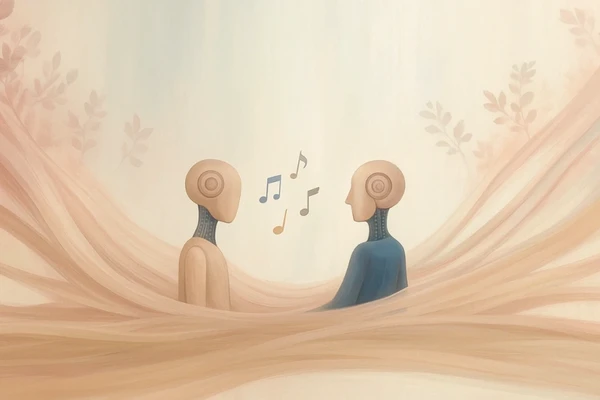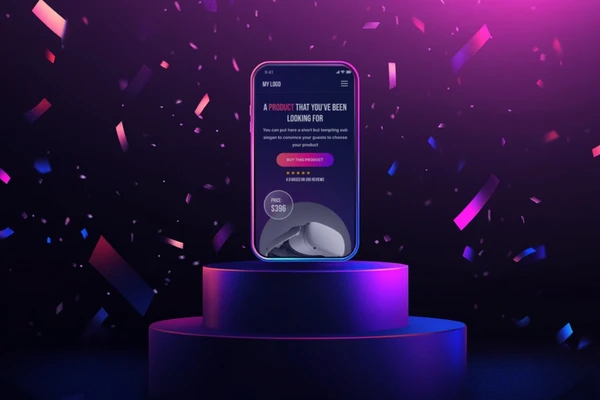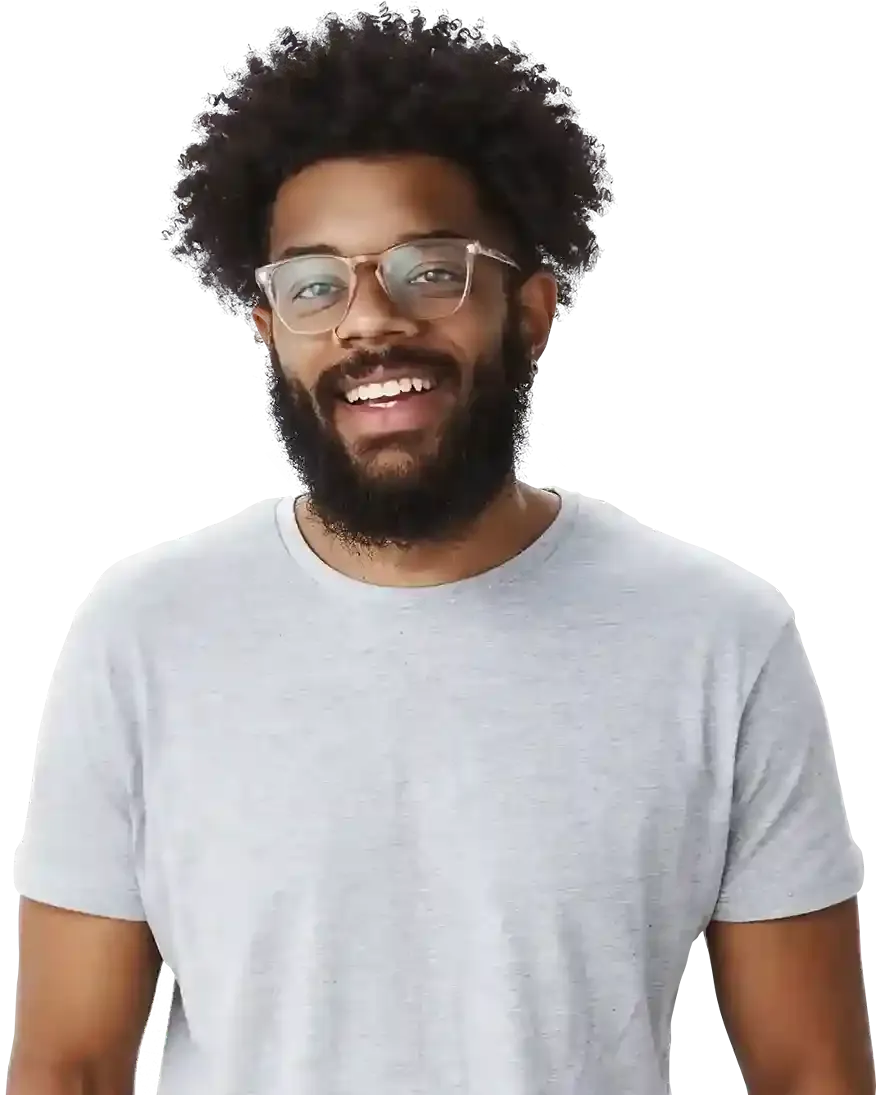A creative CV is a chance for a 3D graphic designer to show employers their experience in 3D design and why they are a suitable candidate for a given position. Although in the case of creative professions, the resume is often neglected at the expense of the portfolio, it remains a powerful tool with which you can tip the scales of victory on your side. However, for that to happen, your CV must be unique.
Check out my step-by-step guide on how to build an attractive resume for the creative industry. I will also provide free CV templates dedicated to graphic designers, which you can use freely.
Start Here!
What does a 3D artist do?
A 3D graphic designer is responsible for creating three-dimensional models, animations, and visual effects that will be used in various ways in TV, film, gaming, or website creation.
Are 3D artists in demand in 2023?

Did you know that in 2020 the 3D market exceeded the value of $ 175.1 billion? This is an increase of over 20% compared to previous years! Moreover, the 3D animation market is expected to grow by around 11.7% annually (this applies to 2021-2028).
Currently, there is a great demand for 3D creators. Companies are looking for designers who can create realistic and accurate 3D models and animations. There is also a need for designers who can use different programs to create 3D designs.
However, if you are a self-taught or fresh graduate in graphic arts, you must stand out from the competition. What will help you in finding employment?
What will work better in the design industry - portfolio or CV?
As a specialist in 3D graphic design, do you need a resume if you already have a portfolio showing your best work? It may seem like no, and most graphic designers probably don't have one… and this is your chance to stand out! While the visual aspects of your portfolio work will play a huge role in recruiting, your CV is an element that will help you showcase the rest of your skills and competencies. A creative resume is also the best place to present all your experiences and achievements unrelated to design.
Online CV in the creative industry - what are the benefits for you?
A static resume as a PDF or (worse) a text document will not help you stand out from the crowd of candidates (and even make it difficult). If you want a job in the creative industry, opt for a creative solution - a modern online CV. A CV in the form of a website gives many possibilities for modification. Thanks to this, you can quickly adapt it to a specific job offer, and after your recreation is finished, turn it into a professional portfolio.
How to create a 3D artist resume that will catch the eyes of recruiters? - 16 essential tips
Before your application reaches the creative department, it will first go to the hands of HR specialists. That is why it is so important to have a resume make a great first impression. How do you make your résumé delight your recruiter, rather than ending up in the bin? Follow the rules below!
1. Choose the appropriate CV format
Appropriate, which is what? Which CV format is suitable for a 3D graphic designer? Choose one of the tried and tested solutions to increase your chances of success during recruitment. The following formats are best suited to your industry:
Reverse chronological CV
This CV format will show your recent jobs, projects, and achievements first. Chronologically reversed CV will work for people who have experience or want to distract from the beginning of their career. Such a CV will help recruiters quickly find the most up-to-date information about you.
When creating a reverse chronological resume:
a) Start with your current or newest job.
b) Include up to 5 items under each work. Don't just mention responsibilities. Focus on achievements.
c) List your most important achievements at the bottom.
d) Adjust your CV to the requirements of a graphic designer. However, don’t list all your professional responsibilities and achievements. Focus on what is essential for that particular position.
Functional CV
A functional CV is ideal for the creative industry, as it allows you to highlight practical achievements. Choose them if you want to focus on your skills and not necessarily on your work experience. The two most important elements of a functional resume are at the top. This is your professional goal and skill summary.
Start now
2. Make sure your CV structure is clear
If your CV is chaotic, it will be rejected at the beginning without hesitation. What is the conclusion of this? Above all, an excellent graphic resume must be legible.
Apply the rule; the less is more! The minimalistic and logical layout will make the CV transparent so that no vital information will escape the recruiters' attention.
Make sure you divide your CV into sections. This will make your CV easy to navigate. Here is a list of the 6 mandatory sections:
1. Headline (personal information, job title)
2. Purpose
3. Summary
4. Skills
5. Work experience
6. Education
3. Include your contact details in the upper section

CV is a place to enter your first and last name, job title, and more. This is the first place a recruiter will look at. Use this opportunity and specify your contact details at the outset. The top section of your online CV is also a suitable space for linking to social media channels.
4. Present your goal
Already at the beginning of your CV, it is worth including a short description that will interest recruiters and will present your motivation to work in this field. To formulate your goal, answer a few questions:
1. Why should an employer hire you? How do you stand out from the competition?
2. Is this specific position in line with your professional goals? How can you prove that you will find yourself in this particular job?
3. What experience or skills make you a perfect fit for the job?
If you don't have professional experience, include a goal in your CV to demonstrate your willingness to work in a given position. This will allow the future employer to understand your motivation to work in the creative industry and convince them that you will do well in a given situation, even if it is your first job. Include a short mention of any internships or apprenticeships that will prove that you are progressing in a particular direction. Justify why you are worth hiring and what values you bring to their team.
An example of the goal of one of our 3D design graduate users:
I'm a creative 3D artist looking to expand my knowledge and polish my skills at Tower Architects Inc. I am currently working on getting Adobe certification. During the 4-week Unreal Engine 4 workshop, I mastered new techniques for creating 3D environments in real-time. I finished the workshops by passing the project, deepened my knowledge, and improved the speed of the tasks performed. I'm happy to use my technical and creative skills to develop client graphic concepts that will translate into specific sales results for the company.
5. Write a work summary

This is an option for people with work experience (of course, this is also a place to consider internships). The summary of your experience in your CV is a few short sentences highlighting your strengths and showing that you are the perfect candidate for the position.
Example:
Experienced and committed designer with extensive knowledge in 3D and 2D animation design and the ability to plan and manage projects.
6. Highlight your strengths

The skills section of a 3D artist CV should mix these elements: programming and creativity. Here are the key skills of a 3D artist that can strengthen your CV:
Technical skills
Point out the most essential 3D design programs such as Blender, ZBrush, 3D Slash, Rhino3D, LightWave 3D, Maya, Cinema 4D, and 3D Studio Max. The knowledge of the famous tools for creating graphics and animations, the Adobe Suite (Photoshop, Illustrator, InDesign, After Effects, Premiere) is also worth mentioning.
Artistic skills
Include any artistic skills and interests relevant to the position of a 3D graphic designer, such as photography, design, drawing, freehand illustration, 3D modeling, etc. Mention your knowledge of composition, texturing, coloring, shading, and character rendering.
Creative and soft skills
Don't forget to create a list of so-called soft skills, i.e., your predispositions and character traits that facilitate work in the creative industry. What soft skills should a designer have? Above all, they must be creative and communicative and be able to propose solutions to problems. In most companies, the position of 3D graphics involves working in a team on specific projects. It is worth mentioning such skills as the ability to cooperate and project management. Additionally, organizational skills and managing your own time will always be appreciated.
Start now
7. Provide details from previous positions
Each item on your list should include the company's name, the amount of time you worked there, your primary responsibilities, daily tasks, and some standout achievements. It is worth mentioning such aspects as cooperation with animators, participation in meetings with clients, using 3D modeling to create graphics, implementing creative ideas, etc. Keep the information brief.
8. Describe your experience in an interesting way
Regardless of what field you specialize in (commercials, movies, games), describe your 3D design experience in such a way as to present all your technical knowledge in a nutshell.
1. Use action words in your CV to help you dynamically describe your experience.
2. Show off your achievements. If you have no professional experience, describe student projects, assignments, or internships in which you participated.
9. Complete the section on education

It is worth ensuring that the education section meets the employer's expectations. Some companies may require you to complete a degree in a field directly related to graphic design and animation. What to do if you have completed another technical faculty? While practical skills play the most crucial role in the graphics industry, don't skip the education section. Have you studied math, physics, or programming? Don't take it lightly. Analytical thinking is a great asset everywhere, even in the design industry.
Here's how to complete the education section of your resume correctly - start with your highest academic degree and add all other schools in reverse chronological order. Follow the scheme below:
1. Type of diploma.
2. Field of study/specialization.
3. Name and location of the school.
4. Years of study.
If you have little work experience to include in your CV, make sure to list In the education section, for example, awards you have won or interesting academic projects in which you have participated.
10. Expand your CV
All the sections of your CV discussed above are essential. However, if you want to personalize your CV, even more, there is nothing to prevent you from adding additional sections to your CV. Here are ideas that catch the attention of recruiters:
1. Courses and certifications play a crucial role in 3D design. If you can boast a lot of training, please devote a separate section to it!
2. Consider creating a "Projects" section. Choose those projects that match the job offer. For each entry, list the title, graduation year, and responsibilities.
3. Make a list of interests related to your business. This way, you will show the recruiter that you are genuinely passionate about 3D design.
If you are familiar with the different steps of 3D machining, consider showing your experience level (similar to language levels).
11. Attach a cover letter

Do you need a cover letter when applying for the graphic designer position? Sure! According to 83% of people, an excellent cover letter can secure an interview even if your resume isn’t exceptional.
The creative industry is a place for people with passion. In your cover letter, you have the chance to present your individual story and describe how your adventure with 3D design began. A cover letter for a graphic designer is a chance to introduce yourself and be distinguished positively from the competition.
12. Bet on the original
In the CV for a 3D artist, the graphic cannot be at a low visual level. Beautiful graphics are a must-have in this case. Using infographics will also positively affect your CV's readability - you can use them to illustrate the most critical stages of your career without using words.
13. Choose legible fonts
As a graphic designer, you know how important font is for text reception. Using a unique font can easily make your CV stand out from the crowd with traditional Arial and Times New Roman fonts. There is no right or wrong font when it comes to a resume, but here are some basic guidelines to keep in mind:
1. Make sure every typeface you use is legible both on screen and in print. The font size should be between 11 and 13 points. Any smaller font, even the most elegant one, can already become unreadable.
2. Be consistent in using different font sizes. For example, all headings should be the same size as all body text.
3. Sans-serif fonts are usually a good option for more creative areas. Serif fonts, on the other hand, will prove themselves in more conservative industries.
4. Avoid fonts like Comic Sans or Papyrus, which are considered unprofessional and a bit infantile in the design industry.
14. Use white space
White space is a frequently used procedure in designing documents. It's worth betting on a minimalist, clean CV template design with lots of white space. Thanks to this, your CV will become pleasant to read, which will significantly help recruiters. Empty spaces and line spacing will give your application documents a clean look and enhance their content.
15. Keep the right length

One, two, or more pages, or how long should your CV be? While there are no official guidelines for the length of a CV, the less is the better rule. A lot of applications go through the hands of recruiters every day. A too extensive CV may, therefore, effectively discourage one from reading its content. Ideally, the resume should be around 2 pages. Including all key information halfway up the first page is good practice. Thanks to this, the recruiter knows at first glance that they are dealing with an interesting application.
When using BOWWE CV Builder, you have ready-made templates and tools that will allow you to include more key information than a regular text document. And all this without having to create long descriptions and uninteresting-looking blocks of text. At BOWWE, you can create a comprehensive CV in which you communicate all the facts with slogans and visually appealing infographics.
16. Create an engaging story and apply storytelling
You've created a good CV, but the recruiters don't speak up yet? You may not receive an interview because your résumé has not stood out among hundreds of others. To change this, use the technique of storytelling in your CV.
Presenting your professional history as a thrilling story will effectively attract the attention of recruiters. What's more, the storytelling elements in the introduction or in the experience description will add originality to your CV, and that's what the creative industry is all about! How to turn a 3D graphic artist's CV into an engaging story? Listing work experience in points, add a few words about what good you have done for the companies you worked for. Don't forget to mention your most important tasks and what you learned.
3D artist CV templates [Free to use]
See All CV Templates!
3D artist CV - summary
Here is a short summary - of the most essential tips for building a CV that will help you succeed in the job market:
1. Include the most essential information in the header - At the top of your CV, including what should be visible, i.e., contact details, address, well-articulated purpose, or professional graphic summary.
2. Consider your experience - If you have little or no experience, it's better to start with the purpose of your resume. If you already have an employment history, summarize it briefly in your work summary.
3. Decide on CV Format - Choose the reverse chronological format of your CV if you want to show your most recent projects first.
4. Apply Storytelling - Describe your work experience using action words that will highlight your achievements.
5. Modify your CV - Adapt every detail in your CV to the job offer. Each point should match the job description of the 3D graphic artist.
6. Format content to make your resume legible - Use legible fonts and leave enough white space between lines. Use a set of standard CV categories and label each with a clear headline and subtitle. This will make your CV easy to navigate. Use bullets and avoid too long blocks of text - select only the most important information! Additionally, be sure to keep the length of your CV.
7. Include Your Address - If you are applying for a job in a local area, it makes sense to include your full address or at least the area where you live. However, if you are applying for a remote job or are ready to change your place of residence, you can skip this section.
8. Show your activity in social media - Living in the present day, it is impossible to ignore the role of social media. This also applies to what we put on our CVs. If you include your LinkedIn profile, please update it with relevant information.
Keeping in mind the above principles, you can easily create a professional CV that presents you as a professional and creative 3D artist, thus beating your much less distinguished competitors.
Create a modern CV in the BOWWE CV Builder, which will attract the attention of recruiters looking for a 3D graphic artist to join the team. When applying for a position, an online creative resume will significantly increase your chance of being noticed early in the recruitment process. Thanks to this, you will get an invitation to an interview much faster than sending a less exciting and distinctive CV.
Start Here!

Karol is a serial entrepreneur, e-commerce speaker m.in for the World Bank, and founder of 3 startups, as part of which he has advised several hundred companies. He was also responsible for projects of the largest financial institutions in Europe, with the smallest project being worth over €50 million.
He has two master's degrees, one in Computer Science and the other in Marketing Management, obtained during his studies in Poland and Portugal. He gained experience in Silicon Valley and while running companies in many countries, including Poland, Portugal, the United States, and Great Britain. For over ten years, he has been helping startups, financial institutions, small and medium-sized enterprises to improve their functioning through digitization.




x600.webp)



